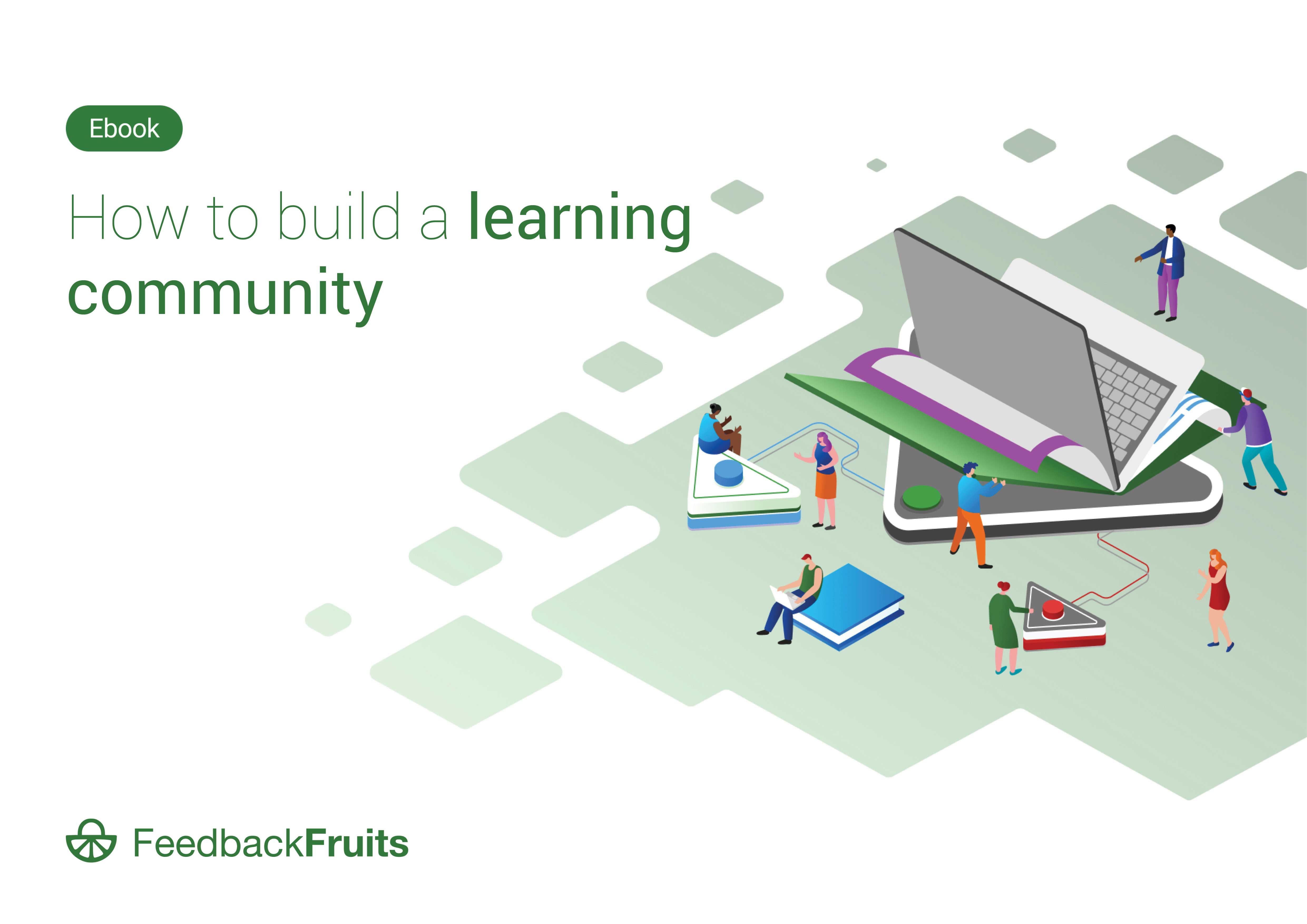Higher education institutions are entering unstable times. New generations of students are changing how they choose institutions, and these face competition from corporate skill based training programmes, plus, concerns on student debt keeps growing. Of these problems, one that universities and colleges have a degree of control over is student retention rates - or dropout rate. Retention rates have an impact on a wide variety of outcomes, from the reputation of a specific institution to the reputation of higher education overall. However, there are many ways in which institutions can tackle poor retention, particularly in the area of student academic engagement.

Academics agree that there is a link between student engagement and retention (Chen, Lattica & Hamilton, 2008; Conner, 2011; Hattie, & Anderman, 2013). Overall, students who are engaged in their studies are more likely to be successful, which includes remaining at an institution to complete their qualification. Furthermore, an engaged student body is likely to be an asset for an institution for more reasons than retention alone. It has been noted that student engagement involves two sides of the same coin. First, student involvement and attention. And secondly, how higher education institutions allocate their resources, such as teaching skills and curriculum design, to encourage students to access and benefit from education (Tight, 2019). Accordingly, students should not be helped to acclimatize to institutions, but rather institutions should be working harder to understand how to engage and activate students (Tight, 2019).
.png)
Many commentators have pointed out how the traditional lecture format is impersonal and encourages passive learning. Several suggestions have been put forward on how to better engage students in the learning process and as a consequence drive up retention rates.
"The more students interact with other students and staff, the more likely they are to persist."
Authentic and relevant curricula are excellent ways to engage students. Good curriculum design brings together knowledge and pedagogy in a way that makes sense to current students. A body of evidence emerging from the US shows ‘the more students interact with other students and staff, the more likely they are to persist’ (Crossling, Heagney & Thomas, 2009: 12).
Active learning means getting students to play a more active role in learning processes. It encourages autonomy in students and pushes them to interact with an institution on their own terms. Active learning often involves more modern pedagogical approaches, like experiential learning, problem based learning, project based learning and collaboration with peers. This approach encourages building links between peers and staff, engaging in social and emotional learning and being part of a ‘learning community’ (Tinto, 1998), all of which increase engagement.
To collaborate in peer learning activities has a positive effect in student engagement. It does not only support the students’ perception and value of peer feedback, but it also has a positive impact on their academic outcomes (Mulder, Baik, Naylor & Pearce, 2014). By changing the process in how feedback is made available to students – in this case, delivered by their classmates instead of by their teachers – students strengthen their commitment and engagement with their courses and their peers (Heppelestone et al, 2011). This can consequently reinforce their commitment to the institution itself.
Formative assessment offers an approach to skill learning with slightly lower costs than traditional forms of learning which emphasize being correct or incorrect. Formative assessment allows students to adapt to a new learning environment by being introduced to constructive feedback which they may not have received at a lower level of education. Formative assessment as part of course design can build confidence and a positive attitude.
Technology holds great potential for improving student engagement and therefore retention rates (Ueltschy, 2001; Aviles & Eastman, 2012; Bajt, 2011; Werth & Werth, 2011). Active learning and formative assessment, as well as peer feedback, experiential learning and collaborative learning are all made feasible through technology. Additionally, distance-learning students can engage with their peers in more immediate ways, as well as accessing the materials and learning processes.
Digitalization of education (blending) creates more room for human interactions. On one hand, it relieves some teaching staff’s burdens and gives them more time to communicate and connect with students. And on the other, the students can strengthen their peer relationships through digital social interactions, especially distance-learning students. Furthermore, the use of technology to communicate and share ideas and project work has shown to improve higher order thinking skills (Cradler, McNabb & Burchett, 2002).
The link between student retention and engagement is clear. Committed, interested, involved students have the best chance of completing their qualifications, regardless of other issues. Moreover, it is important for institutions to start thinking about how their teaching – including curriculum design, teaching styles, student support, available technologies – contribute to students' learning and enjoyment of learning. Of course, true learning involves challenge and deep thought, which are not always comfortable processes, but it is crucial that institutions see themselves as adapting to students, giving them the flexibility of different approaches within the wider framework of education.
"While learning technologies are sometimes seen as a luxury, soon they will become default tools for engaging students."
Technology can give institutions much of that flexibility, as well as introducing new forms of pedagogy and new tools for learning into the classroom (whether digital or on campus). For institutions to stay relevant in creating engaging learning experiences, technology is an ideal opportunity. While learning technologies are sometimes seen as a luxury, soon they will become default tools for engaging students. Institutions who do not invest in technology will face increasing competition from places that will keep pace with innovation.
We recommend checking out our ebook – Quality online teaching and learning, which presents best strategies and resources on how to maintain student engagement and retention any course setting: online, hybrid, blended, and hyflex. Download it in the link below.
Aviles, M. & Eastman, J. (2012). Utilizing technology effectively to improve Millennials’ educational performance. Journal of International Education in Business, 5 (2): 96-113.
Bajt, S. K. (2011). Web 2.0 technologies: applications for community colleges. New Directions for Community Colleges, 154: 53-62.
Chen, H, Lattica, L, & Hamilton. (2008). Conceptualizing engagement: Contributions of faculty to Student Engagement in Engineering. Journal of Engineering Education, 97(3): 339-352.
Conner, T. (2011). Academic engagement ratings and instructional preferences: Comparing behavioral, cognitive, and emotional engagement among three school-age student cohorts. Review of Higher Education and Self-Learning, 4(13): 52-62.
Cradler, J., McNabb, M. F., & Burchett, R. (2002). How does technology influence student learning? Learning & Leading with Technology, 29(8), 46-56.
Crossling, G., Heagney, M. & Thomas, L. (2009). Improving student retention in higher education: Improving teaching and learning. Australian Universities Review, 51(2): 9-18.
Hattie, J., & Anderman, E. M. (2013). International guide to student achievement. New York: Routledge.
Hepplestone, S., Holden, G., Irwin, B., Parkin, H. J., & Thorpe, L. (2011). Using technology to encourage student engagement with feedback: a literature review. Research in Learning Technology, 19(2).
Kuh, G. D. (2001). The National Survey of Student Engagement: Conceptual framework and overview of psychometric properties. Indiana University Center for Postsecondary Research and Planning.
Mulder, R., Baik, C., Naylor, R., & Pearce, J. (2014). How does student peer review influence perceptions, engagement and academic outcomes? A case study. Assessment & Evaluation in Higher Education, 39(6), 657-677.
Tight, M. (2019). Student retention and engagement in higher education. Journal of Further and Higher Education.
Tinto, V. (1998). Learning Communities: Building Gateways to Student Success 1. The National Teaching and Learning Forum, 7.
Ueltschy, L. C. (2001). An Exploratory Study of Integrating Interactive Technology into the Marketing Curriculum. Journal of Marketing Education, 23: 63-72.
Werth, E. P. & Werth, L. (2011). Effective training for millennial students. Adult Learning, 22(3): 12-19.

Explore how to best implement active learning strategies with deep understanding of different modalities

FeedbackFruits announces partnerships with many institutions worldwide over the past 4 months

An overview of the state of competency-based education (CBE) in higher education around the world